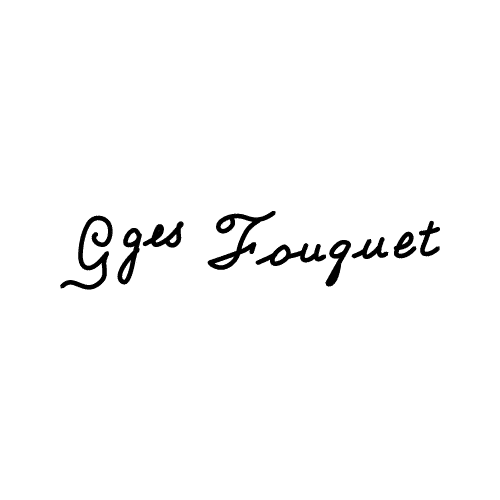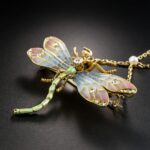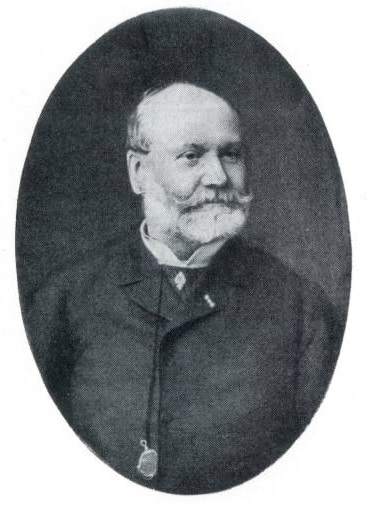
Fouquet was a French jewellery house known for its Renaissance Revival and Art Nouveau work. In 1839, the firm’s founder, Alphonse Fouquet, entered the jewellery industry at the age of eleven, serving as an apprentice to Parisian jeweller Henri Meusnier. His mistreatment under Meusnier is now infamous. Chronicled in Fouquet’s autobiography, parts of which were reprinted by Henri Vever’s French Jewelry of the Nineteenth Century, the apprenticeship included physical abuse, long work hours (14 to 20 hours a day), low pay, and nearly unbearable living conditions.1 Fouquet stayed for five years after which he trudged from one low-paying manufacturing job to another. In 1847, he got his big break, winning a position designing jewellery at M. Pinard’s firm—a result of the promising sketches he quickly submitted upon learning there was no work to be had for craftsmen. As it happened, Fouquet was a naturally talented artist, and he quickly distinguished himself from his peers.
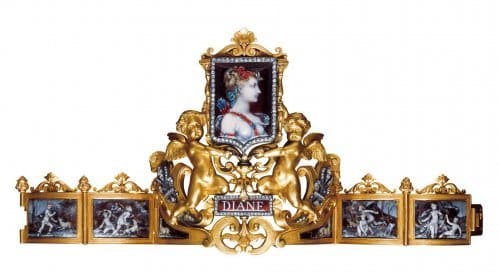
In 1860, after working for several firms, he opened his own shop. While first producing fine archaeological revival jewellery, Fouquet turned to the Renaissance revival style in the 1870’s and 80’s, creating some of the most stunning examples of revival jewellery from that era. His designs were fantastical, featuring sphinxes, dragons, mermaids, putti, and other mythological characters. Fine chasing, enamelling, and diamonds embellished the pieces. In 1878, when he exhibited his work at Paris’s Universal Exposition, Fouquet won a gold prize for pieces that were described as “absolutely flawless” by fellow jeweller Falize.2 His later work also prefigured Art Nouveau trends. In particular, he is credited with re-introducing the female form into jewellery, a practice considered “heresy” by some.3
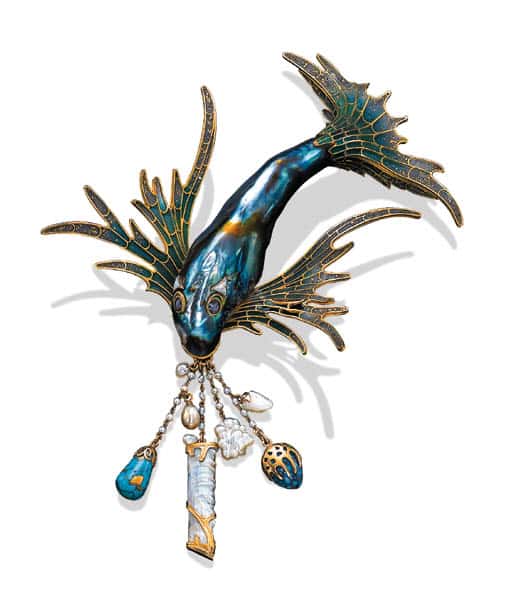
Photo Courtesy of Christie’s.
In 1895, Alphonse’s son, Georges Fouquet, assumed control of the business. “A tireless worker,” says Vever, “he was enthralled by all things new, and his search for fresh inspiration was relentless.”4 By 1898, he was exhibiting jewellery in the Art Nouveau style. Indeed jewellery historians deem the firm’s work during this era second only to that of René Lalique.5 Its pieces were typically composed of gold and embellished with enamel, opals, horn, pearls, and, sometimes, finely-set diamonds. Naturalistic motifs predominated. Sensuously curvy lines, softly coloured enamels, and subtle textures were used to great effect. A host of celebrated artists were kept on staff during this time, including Alphonse Mucha, Charles Desrosiers, and Etienne Tourette. Mucha’s pieces, in particular, won the firm praise. According to art historian Vivienne Becker, his jewels were,” strange objects, theatrical and unwearable, shoulder and breast pieces, head ornaments draped with chains, with fabulously enamelled plaques Byzantine in flavour and entirely different from the usual run of naturalistic Art Nouveau jewels.”6 One of his most famous pieces was a serpent-motif bracelet habitually worn by actress Sarah Bernhardt. Until 1910, Fouquet continued to produce jewels in the Art Nouveau style. After that, the firm adopted a rather tamer and more abstract style, conducive to Edwardian sensibilities.
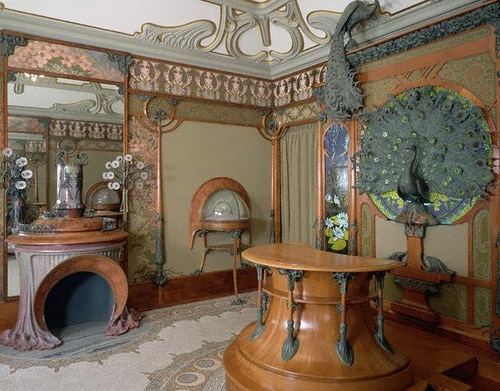
Maker's Marks & Timeline
Fouquet
| Country | |
|---|---|
| City | Paris |
| Symbol | arrow, cartouche, diamond, frame, kite, whip |
| Shape | cartouche, diamond, frame, kite |
| Era | e. c.1852 – 1936 |
Specialties
- Founded by Alphonse Fouquet (1828-1911)
- Rue Royale
- Son, Jean Fouquet (1899-1984)
1838
- Alphonse moves to Paris
1845-1854
- Works with Alexis Falize, Charles Murat, Robin, Jules Chaise
1855
- Works with Léon Rouvenat as modeller
- Second-class medal at the Paris World Exhibition
1861
- Partnership Eugène Deshayes
1862
- Georges Fouquet Born
c.1862-1868
- Dissolves partnership with Deshayes
- Filigree with stones.
- Cameos & Miniatures.
- Mythical beasts such as griffins, chimera and the sphinx.
- Jewelry produced for export worldwide
1876
- Exhibits his own jewelry at the 5th Exhibition of the Union Centrale des Beaux-Artes Appliqué à l’Industrie.
c.1870s
- Fouquet began to develop his Renaissance Revival style for which he became renowned.
1878 World Exhibition
- Gold Medal
- Strong influences of the ancient world and historic revival.
1883 International Exhibition, Amsterdam
- Convertible necklace/tiaras featuring email en ronde bosse.
1888
- Knight of the Legion of Honour
1889
- Gold Medal Paris World Exhibition
1861
- Georges became co-owner at Avenue de l’Opéra
1895
- Georges (1862-1957) Took over the firm.
- Registers his mark.
Specialized
- Art Nouveau & Art Deco Styles.
- Extensive use of Enamel and Colored Stones.
- Learned the jewelry arts at Rouvenat.
1899
- Collaboration with Charles Desrosiers (works for Fouquet from c.1910-1914)
- Birth of son, Jean
1900 World Exhibition
- Featured jewelry designed by Alphonse Mucha, who also designed the interiors for the shop at Rue Royale in 1901., Gold Medal.
- Etienne Tourette was employed as an enameller.
1919
- Son Jean (1899-1961) joins the firm, specializing in Art Deco jewels.
1957
- Death of Georges
Related Reading
Sources
- Becker, Vivienne, Art Nouveau Jewellery. New York: E.P. Dutton, 1985.
- Sataloff, Joseph, Art Nouveau Jewelry: A Practical Guide to Its History and Beauty with Pictures of over 150 Pieces of Jewelry and a Compendium of International Jeweler’s Marks. Bryn Mawr, PA: Dorrance and Co., 1984.
- Vever, Henri. French Jewelry of the Nineteenth Century. Translated by Katherine Purcell. London: Thames & Hudson, 2001 [1906-8].


